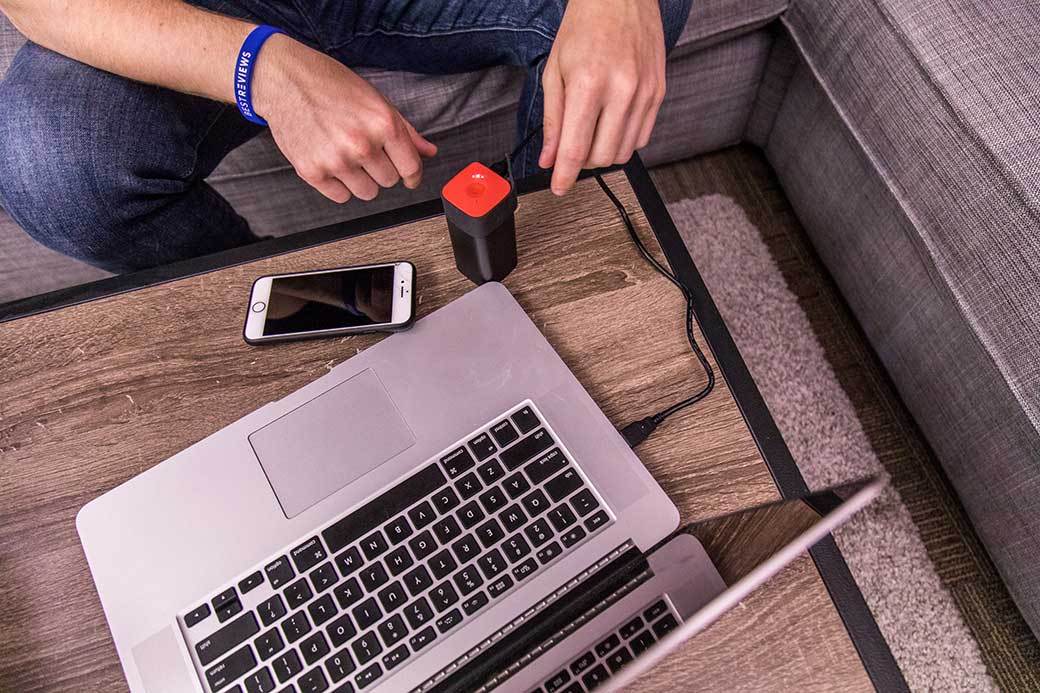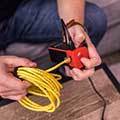Buying guide for Best travel routers
If you travel frequently and need to stay in touch with everything the internet has to offer, you’re going to need a travel router.
Much like a router in your home, a travel router provides an easy way while on the road for you to use your cellphone, laptop, and other devices to transfer files, place online calls, watch videos, play games, and more. Unlike a home router, though, a travel router is specifically built to handle some of the network issues you will run into while traveling.
Key considerations
Ease of setup
Like anything else technical, setup can be a big issue with travel routers. Some are simple plug-and-play devices, while others will need to be configured manually. Some require you to have a computer to set up and configure the router in addition to installing any future firmware updates. Know how difficult the setup will be before purchasing a travel router, particularly if you are not tech-savvy.
Speed
Travel router speeds vary from router to router and largely depend on what bands the router is capable of using. Those routers that only use the 2.4GHz band will generally top out at 300Mbps, although some will be slower. For those routers that use the 5GHz band, speeds can reach up to 433Mbps.
As with your home router, the speed of a travel router will grow in importance the more you use it to download/upload large files or stream videos or games. Travel routers that support the 5GHz band tend to encounter less background noise than those using a 2.4GHz band, leading to a stronger signal. The trade-off is that you will have less range with that stronger 5GHz band connection.
Usage modes
Travel routers can work in a number of different ways. These are the most common usage modes:
- Router mode: In router mode, you connect the travel router to a physical line (cable or DSL), and your devices then connect through the router.
- WAP mode: This mode allows the router to be used as a wireless access point, connected to a wired internet connection via an Ethernet cable.
- WISP mode: Short for Wireless Internet Service Provider, WISP mode allows the router to be used as a client on a wireless network. The router will then share that connection with your various wireless devices.
- Repeater mode: With this mode, you can extend your network. This is a great option to overcome dead spots in your home network.
- Bridge mode: Bridge mode allows you to split the network, essentially creating a new one.
(note: not all travel routers are able to be used in all five ways)
Power options
Travel routers can be powered in a number of different ways. The best travel routers allow for multiple powering options.
Wall sockets: Some travel routers plug right into a wall’s electrical sockets. This is an ideal power source for those who strictly stay in hotels, although you might need socket adapters if you travel outside of the states.
USB: Some travel routers are powered via USB, which is a dependable choice if you plan to use it with a laptop or other USB-capable device.
Battery: While less common, some travel routers offer a battery backup option. The presence of a battery offers true portability, whether you’re camping in the great outdoors or camping out in a coffee shop. Before selecting a travel router with a battery backup option, know how long a charge will last, and how long it will take to recharge when the battery dies.
Size
The nature of travel routers is to be fairly compact, but some really take this to heart and are exceptionally so. The smaller the travel router is, the easier it will be to slip it into a pocket or briefcase.
Built-in tethering
In areas where there is no wireless capability, you would generally need to tether the router to a cell phone to access the internet. While not standard, some routers do feature a built-in cellular modem, so you can access the internet without the need of a cell phone.
Ethernet ports
One or more Ethernet ports are common on travel routers and can be used to take a standard wired internet connection — such as you would find in a hotel — and turn it into a wireless connection that you can share with all of your devices.
USB ports
USB ports are also common on travel routers. With these, you can add a flash drive with files or media to be shared on the network, or use it as a backup for network files. You can also use a USB or micro USB port to power the router, or power other devices such as cell phones.
SD card slots
While not standard, some travel routers do include support for SD cards or other media that you can use for network storage or to locally stream media.
WPS support
Some travel routers incorporate WPS support, short for WiFi Protected Setup, which can provide a number of benefits, including removing the need to type in access names and passwords every time you connect to a network.
Antennas
Travel router antennas can either be external or internal. While external antennas can be a bit bulkier than internal ones, in some situations external antennas may offer more control over signal strength than internal antennas.
Did you know?
One benefit of a travel router for those staying in a different hotel room every night: you only need to set up your devices once — not every night.
STAFF
BestReviews
Travel router prices
Travel routers start out under $20 and can range up to around $55 or so.
In the $20 to $40 range, you will tend to find simpler routers that are usually powered through wall sockets or via USB. These routers will largely offer fewer usage modes and have little in the way of advanced capabilities.
As the price edges up into the $40 range and higher, you start to find much more functionality. Travel routers at this price point tend to offer multiple usage modes, in addition to more advanced features such as compatibility with SD cards, built-in tethering, and more versatile powering options such as battery backup options.
Tips
- Travel routers are not mobile hotspots. Unless they specifically state that they are, travel routers are not mobile hotspots. In other words, you cannot create an internet connection with a travel router, just use an existing one.
- Find a VPN-friendly travel router. If you wish to use your travel router with a VPN, be sure that it has this capability. Some travel routers include software such as OpenVPN that can be used for this purpose.
- Turn your wired printer wireless. One use for a travel router when you’re at home is to plug a wired printer into it, effectively creating a wireless printer.
- Beware of data caps. It is usually cheaper to use a travel router with unlimited access (such as in a hotel) than a smartphone acting as a secure WiFi hotspot, particularly if your carrier caps your data.
- Wired connections are more secure. If your travel router has two Ethernet ports, you should use one for plugging into the wired network, and the other to plug in your computer. This will provide better security for your computer than the wireless network your other devices will be using.
FAQ
Q. Can travel routers help with security when I am on the road?
A. To a certain extent, yes. When you are using it, the travel router will be your only access point, meaning that all devices that are going through it are going to be hidden. It is important to remember, however, that the network you are using is a public one, so you should take care when sharing files and performing other tasks using the network.
Q. Can one of these be used as a WiFi extender?
A. Absolutely, and this is actually one of the most common uses for travel routers in the home. Used as a WiFi extender (also known as a repeater), a travel router can help to boost your network’s signal and overcome wireless dead spots in your home.
Q. Will a travel router work in a foreign country?
A. The only problem you would have using one of these in locations such as Europe or the UK is in terms of powering it. These areas use different electrical socket standards than North America, so you should try to purchase a travel router that ships with the necessary power adapters if you plan to use your travel router overseas.
Q. Is there a limit to the number of devices I can use with one of these routers?
A. While aspects of some routers, such as simultaneous media sharing, may have device limits, there is generally no limit to the number of phones, laptops, and other devices you can use. The number of devices will, however, affect the overall speed of the connection. The more devices you connect, the slower everything will be.

























